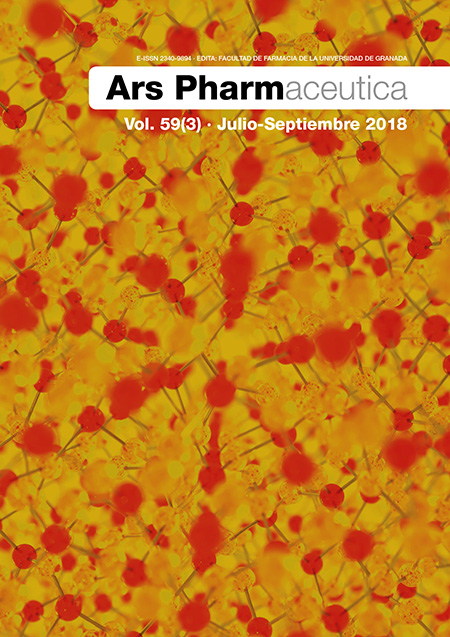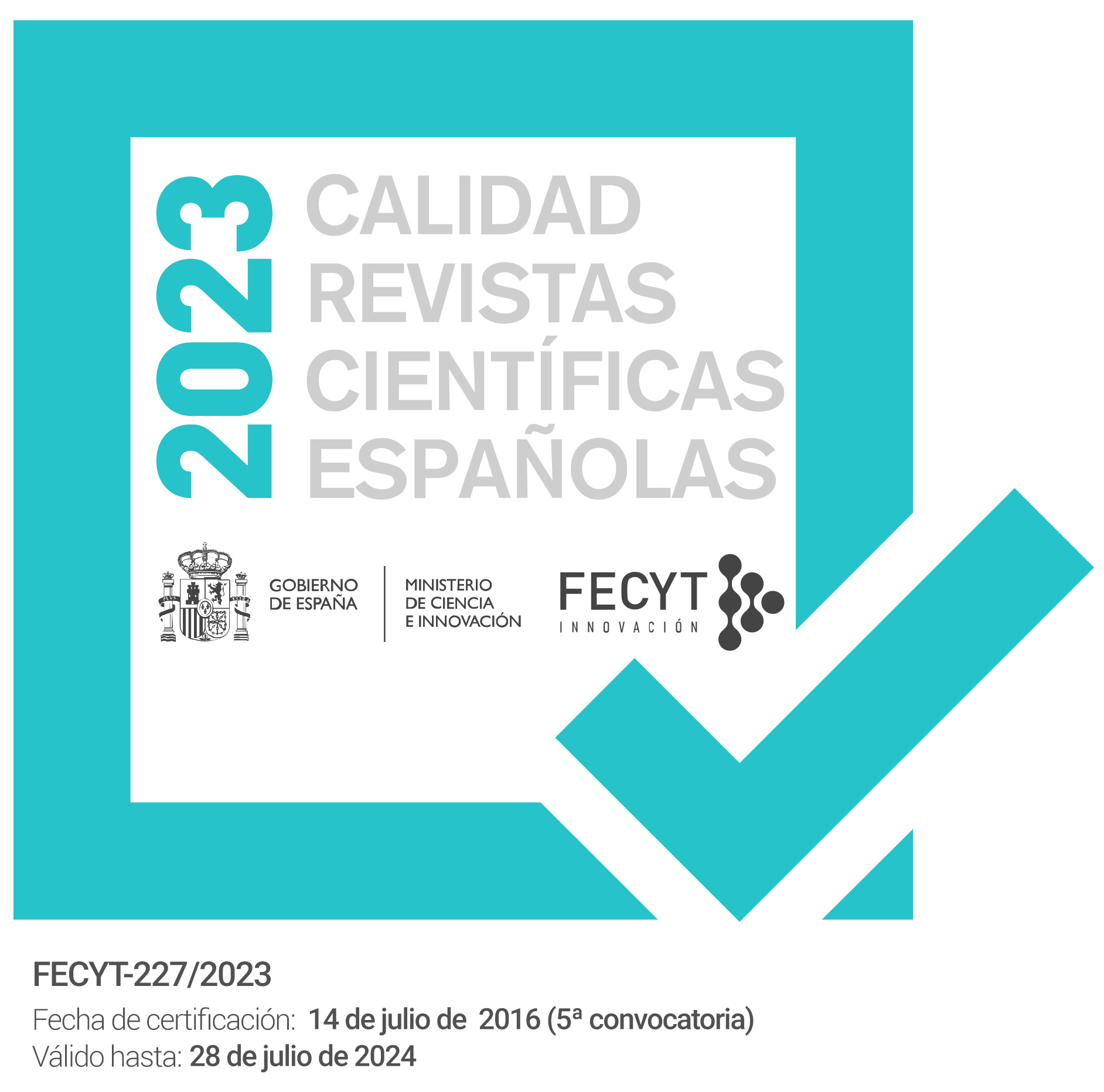Estudios efectivos de potencial para algunas nuevas moléculas híbridas para su actividad contra el cáncer de próstata
Palabras clave:
Híbrido, DU145, 22Rv1, SPR, acoplamiento molecularResumen
Objetivo: El presente trabajo tuvo como objetivo desarrollar nuevas moléculas híbridas para atacar el cáncer de próstata. Se observa que dos proteínas de choque humano, Hsp70 y Hsp90, se sobreexpresan en el cáncer de próstata, lo que las convierte en uno de los objetivos farmacológicos importantes. Hemos diseñado y desarrollado doce nuevas moléculas híbridas 6a-j para dirigir estas proteínas.
Métodos: Las moléculas diseñadas se prepararon siguiendo un protocolo de reacción de cuatro etapas y se caracterizaron sobre la base de RMN de protón y espectrometría de masas. Estos se sometieron a estudios in vitro por medio de ensayos Oncotest y CCK-8 con dos líneas celulares DU145 y 22Rv1. Las moléculas seleccionadas 6b y 6i se sometieron a acoplamiento molecular y luego a ensayo de afinidad basado en SPR.
Resultados: Se descubrió que los Compuestos 6b y 6i son compuestos anticancerígenos muy activos comparables al fármaco estándar enzalutamida. Tienen un IC50 significativo y una puntuación alta para el muelle de Hsp70 y Hsp90. Estos compuestos son selectivos y tienen una buena afinidad de unión por la Hsp70 debido a la alta Kd.
Conclusión: Los compuestos 6b y 6i pueden servir como moléculas principales para el desarrollo de fármacos antiprostáticos contra el cáncer con Hsp70 como objetivo.
Descargas
Citas
Goloudina AR, Demidov ON, Garrido C. Inhibition of HSP70: a challenging anti-cancer strategy. Cancer Lett. 2012;325(2):117-24. DOI: 10.1016/j.canlet.2012.06.003.
Dayalan-Naidu S, Sutherland C, Zhang Y, Risco A, de-la-Vega L, Caunt CJ, Hastie CJ, Lamont DJ, Torrente L, Chowdhry S, et al. Heat Shock Factor 1 is a Substrate p38 Mitogen-Activated Protein Kinases. Mol Cell Biol. 2016:16-24. DOI: 10.1128/MCB.00292-16.
Verma S, Goyal S, Jamal S, Singh A, Grover A, H. sp90: Friends, clients and natural foes, Biochimie. 2016;127:227-40. DOI: 10.1016/j.biochi.2016.05.018.
Aktug H, Acikgoz E, Uysal A, Oltulu F, Oktem G, Yigitturk G. Comparison of cell cycle components, apoptosis and cytoskeleton-related molecules and therapeutic effects of flavopiridol and geldanamycin on the mouse fibroblast, lung cancer and embryonic stem cells. Tumour Biol. 2016; 1-11. DOI: 10.1007/s13277-016-5108-9
Chaudhary AK, Bhat TA, Kumar S, Kumar A, Kumar R. Mitochondrial dysfunction-mediated apoptosis resistance associates with defective heat shock protein response in African-American men with prostate cancer. Br J Cancer. 2016;114(10):1090-100. DOI: 10.1038/bjc.2016.88
Jeon YG, Jung S, Yun J. Ginkgetin inhibits the growth of DU-145 prostate cancer cells through inhibition of signal transducer and activator of transcription 3 activity. Cancer Sci 2015;106(4): 413–420. DOI: 10.1111/cas.12608
Chen H, Xu F, Liang X, Xu B, Yang Z, He X, Huang B, Yuan M. Design, synthesis and biological evaluation of novel arylpiperazine derivatives on human prostate cancer cell lines. Bioorganic & Medicinal Chemistry Letters. 2015;25:285–287. DOI: 10.1016/j.bmcl.2014.11.049
Heidegger I, Massoner P, Eder I. Novel therapeutic approaches for the treatment of castration-resistant prostate cancer. J Steroid Biochem. Mol Biol. 2013;138:248–256. DOI: 10.1016/j.jsbmb.2013.06.002
Colloca G. Prostate-specific antigen kinetics as a surrogate endpoint in clinical trials of metastatic castration-resistant prostate cancer: A review. Cancer treatment reviews. 2012;38(8):2020-2042. DOI: 10.1016/j.ctrv.2012.03.008
Krishnamoorthy GP, Guida T, Alfano L, Avilla E, Santoro M, Carlomagno F, Melillo RM. Molecular mechanism of 17-allylamino-17-demethoxygeldanamycin (17-AAG)-induced AXL receptor tyrosine kinase degradation. J Biol Chem. 2013;288(24):17481-94. DOI: 10.1074/jbc.M112.439422
Chikhale RV, Pant AM, Menghani SS, Wadibhasme PG, Khedekar PB. Poly (Ethylene Glycol)-Bound Sulphonic Acid as a Novel Catalyst for Synthesis of Benzoxazoles. S. Afr. J. Chem. 2013;66:254–262.
Bhole RP, Bhusari KP. Synthesis and antitumor activity of (4-hydroxyphenyl) [5-substituted alkyl/aryl)-2-thioxo-1,3,4-thiadiazol-3-yl]methanone and [(3,4-disubstituted)-1,3-thiazol-2ylidene]-4-hydroxybenzohydrazide, Med. Chem Research. 2011:20(6),695-704. DOI 10.1007/s00044-010-9371-9
Di Matteo M, Ammazzalorso A, Andreoli F, Caffa I, Synthesis and biological characterization of 3-(imidazol-1-ylmethyl)piperidine sulfonamides as aromatase inhibitors. Bioorg Med Chem Lett. 2016;26(13):3192-4. DOI: 10.1016/j.bmcl.2016.04.078
Chikhale R, Thorat S, Pant A. Design, synthesis and pharmacological evaluation of pyrimidobenzothiazole-3-carboxylate derivatives as selective L-type calcium channel blockers. Bioorganic & Medicinal Chemistry. 2015;23:6689–6713. DOI: 10.1016/j.bmc.2015.09.009
Nique F, Hebbe S, Peixoto C. Discovery of diarylhydantoins as new selective androgen receptor modulators. J. Med. Chem. 2012;55:8225-8235. DOI: 10.1021/jm300249m
Dengler W, Schulte J, Berger D, Mertelsmann R, Fiebig H. Anti-Cancer Drugs. 1995;6:522-26.
Goswami R, Mukherjee S, Ghadiyaram S. Structure-guided discovery of 1,3,5 tri-substituted benzenes as potent and selective matriptase inhibitors exhibiting in vivo antitumor efficacy. Bioorganic & Medicinal Chemistry. 2014;22:3187–3203. DOI: 10.1016/j.bmc.2014.04.013
Wang Y, Zhang S, Zhang C, Zhao Z. Investigation of an SPR biosensor for determining the influence of connexin 43 expression on the cytotoxicity of cisplatin. Analyst. 2016;141(11):3411-20.
Descargas
Publicado
Cómo citar
Número
Sección
Licencia
Los artículos que se publican en esta revista están sujetos a los siguientes términos en relación a los derechos patrimoniales o de explotación:
- Los autores/as conservarán sus derechos de autor y garantizarán a la revista el derecho de primera publicación de su obra, la cual se distribuirá con una licencia Creative Commons BY-NC-SA 4.0 que permite a terceros reutilizar la obra siempre que se indique su autor, se cite la fuente original y no se haga un uso comercial de la misma.
- Los autores/as podrán adoptar otros acuerdos de licencia no exclusiva de distribución de la versión de la obra publicada (p. ej.: depositarla en un archivo telemático institucional o publicarla en un volumen monográfico) siempre que se indique la fuente original de su publicación.
- Se permite y recomienda a los autores/as difundir su obra a través de Internet (p. ej.: en repositorios institucionales o en su página web) antes y durante el proceso de envío, lo cual puede producir intercambios interesantes y aumentar las citas de la obra publicada. (Véase El efecto del acceso abierto).




















